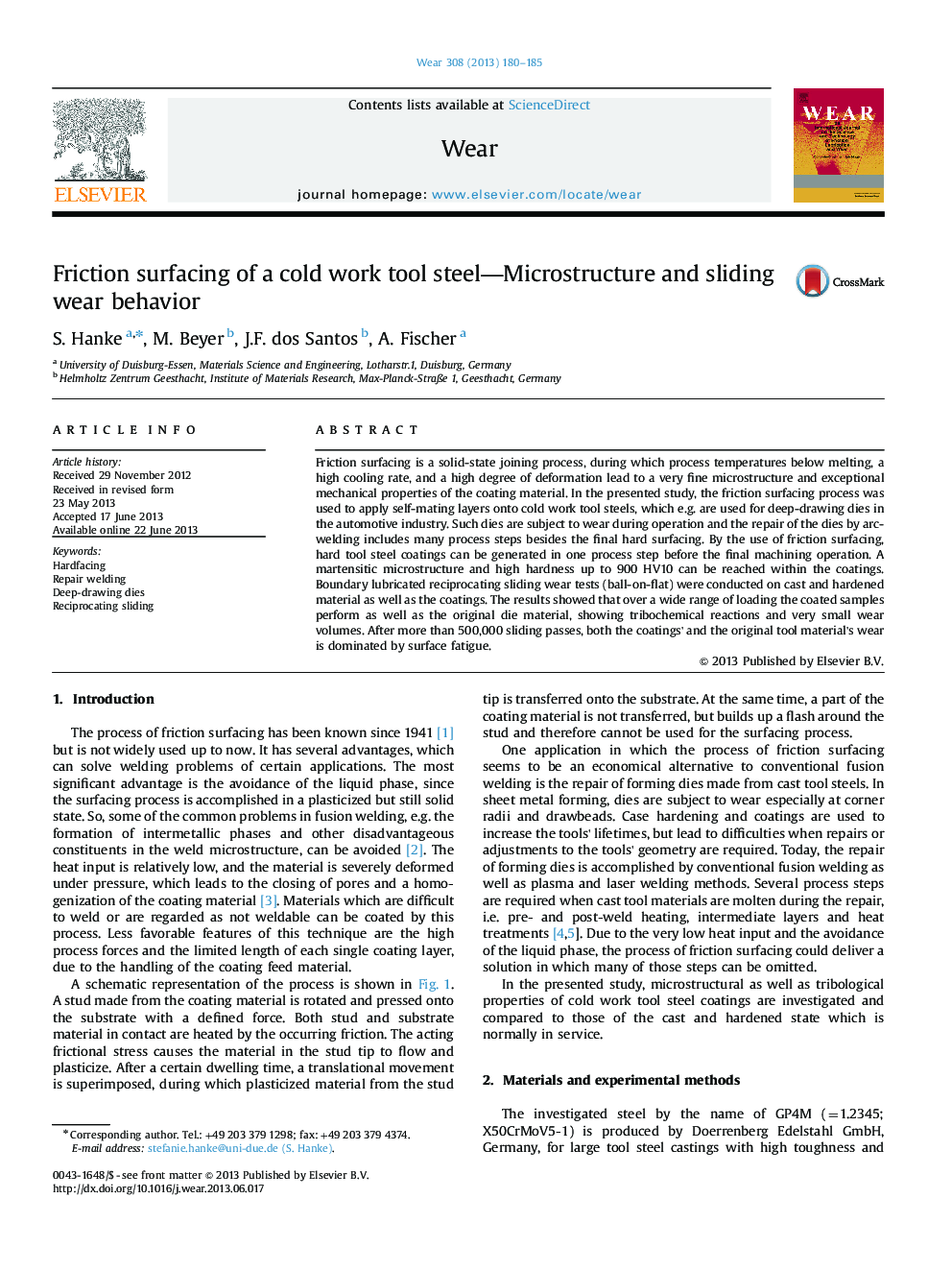| Article ID | Journal | Published Year | Pages | File Type |
|---|---|---|---|---|
| 617445 | Wear | 2013 | 6 Pages |
Abstract
Friction surfacing is a solid-state joining process, during which process temperatures below melting, a high cooling rate, and a high degree of deformation lead to a very fine microstructure and exceptional mechanical properties of the coating material. In the presented study, the friction surfacing process was used to apply self-mating layers onto cold work tool steels, which e.g. are used for deep-drawing dies in the automotive industry. Such dies are subject to wear during operation and the repair of the dies by arc-welding includes many process steps besides the final hard surfacing. By the use of friction surfacing, hard tool steel coatings can be generated in one process step before the final machining operation. A martensitic microstructure and high hardness up to 900 HV10 can be reached within the coatings. Boundary lubricated reciprocating sliding wear tests (ball-on-flat) were conducted on cast and hardened material as well as the coatings. The results showed that over a wide range of loading the coated samples perform as well as the original die material, showing tribochemical reactions and very small wear volumes. After more than 500,000 sliding passes, both the coatings' and the original tool material's wear is dominated by surface fatigue.
Related Topics
Physical Sciences and Engineering
Chemical Engineering
Colloid and Surface Chemistry
Authors
S. Hanke, M. Beyer, J.F. dos Santos, A. Fischer,
